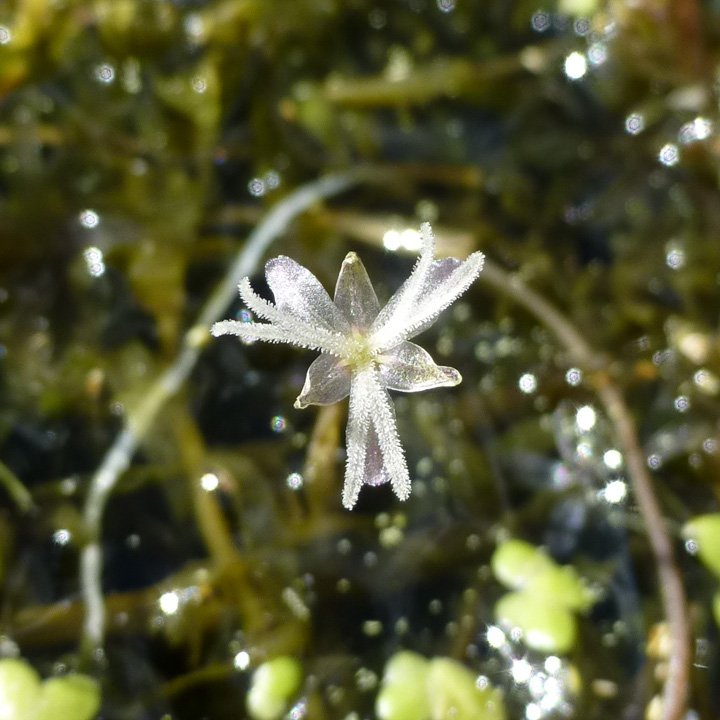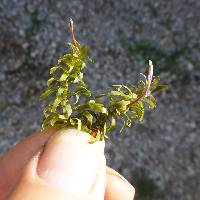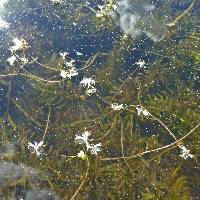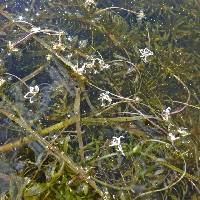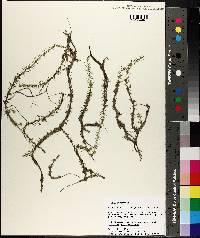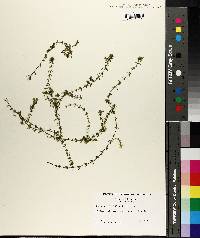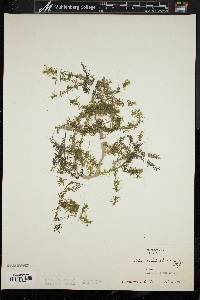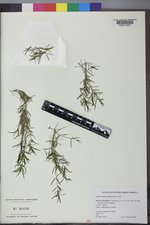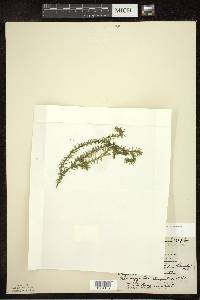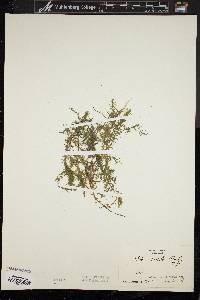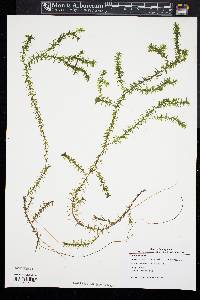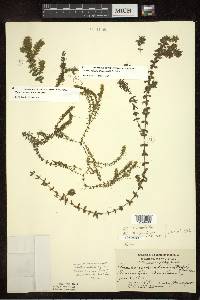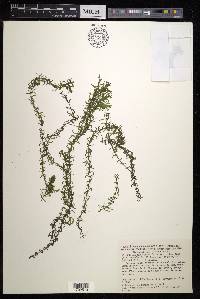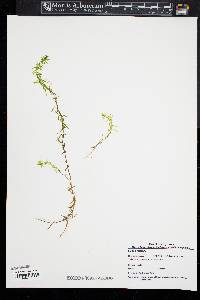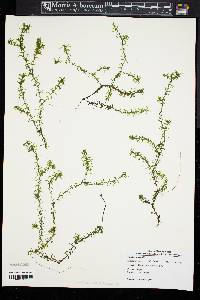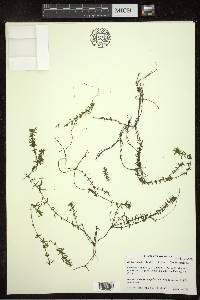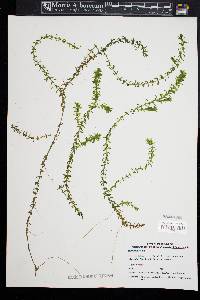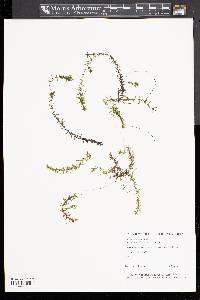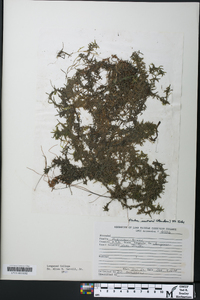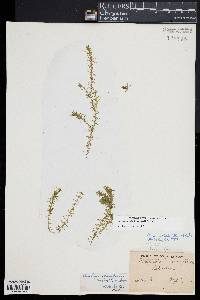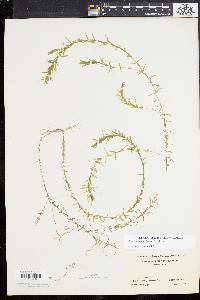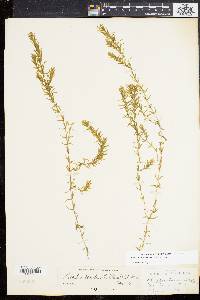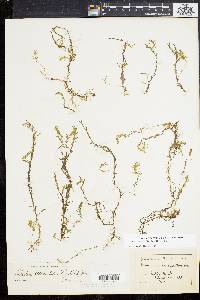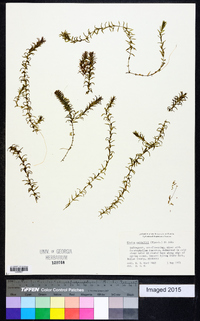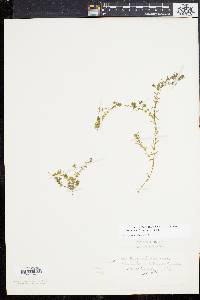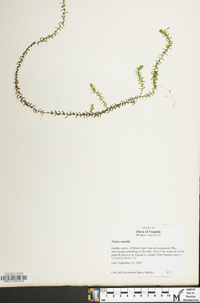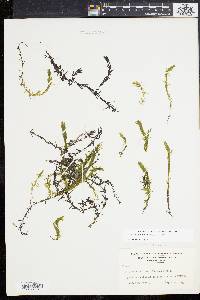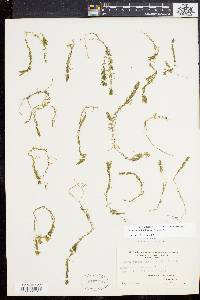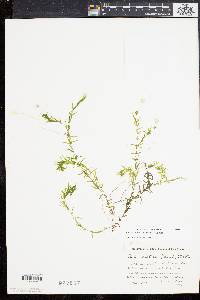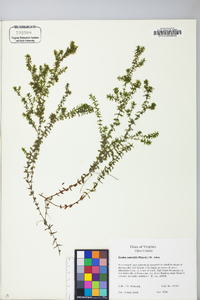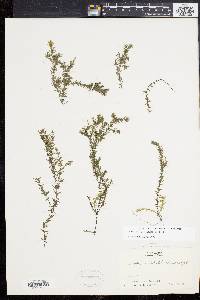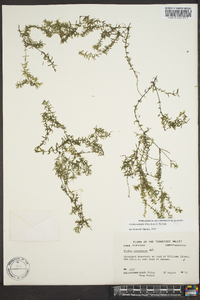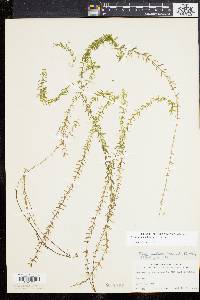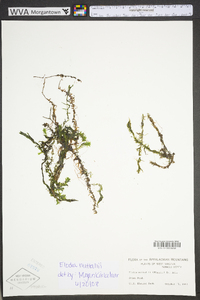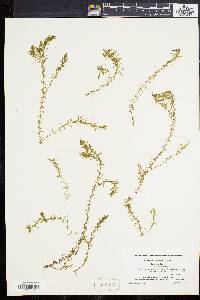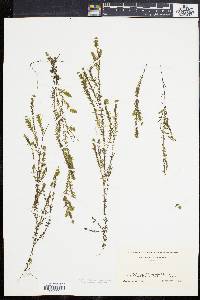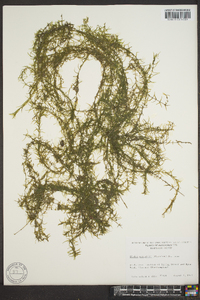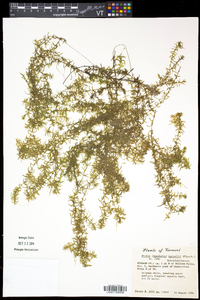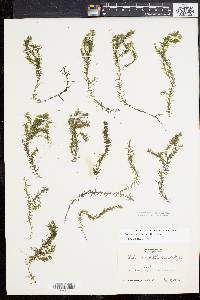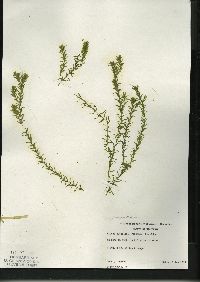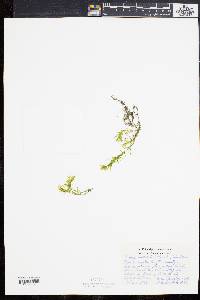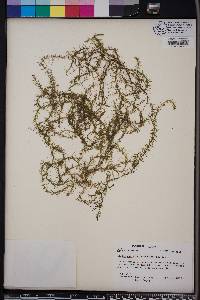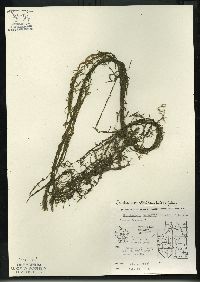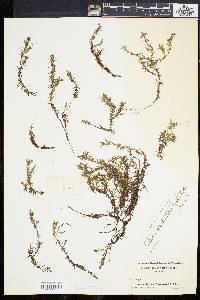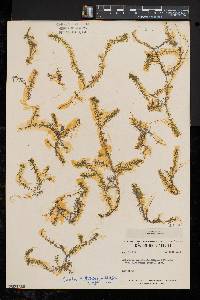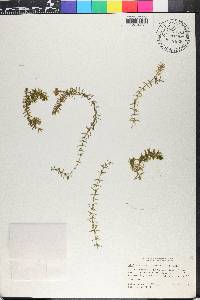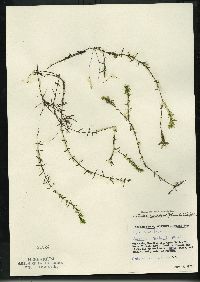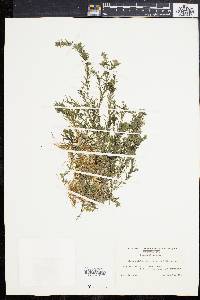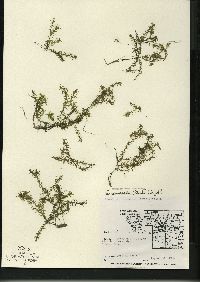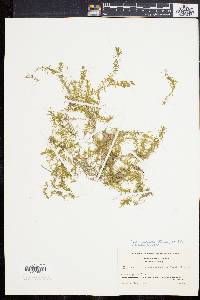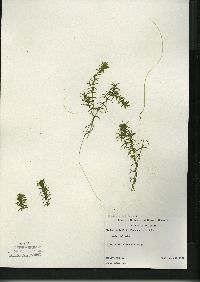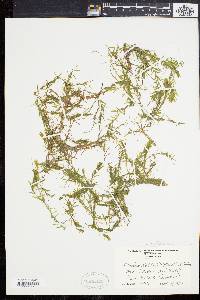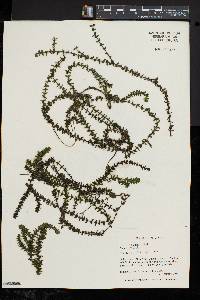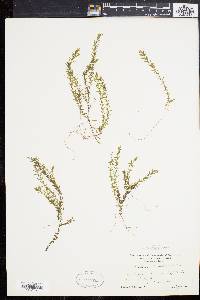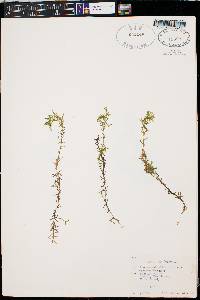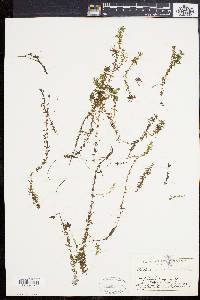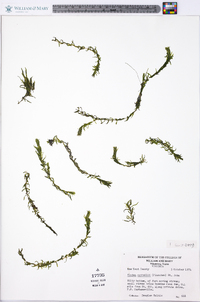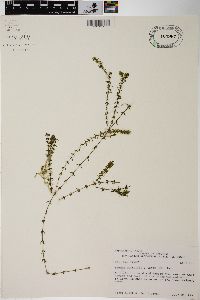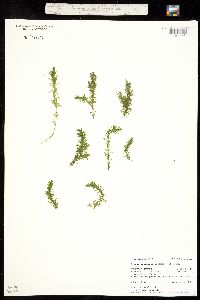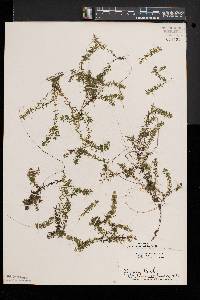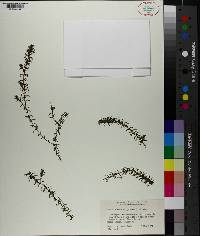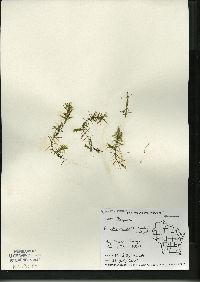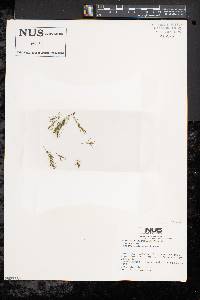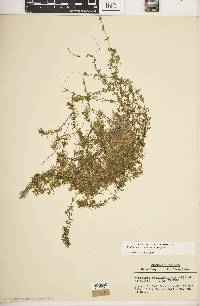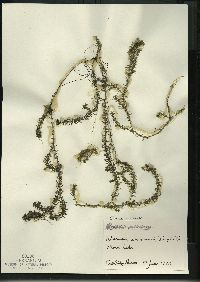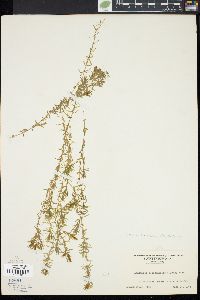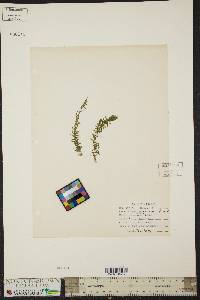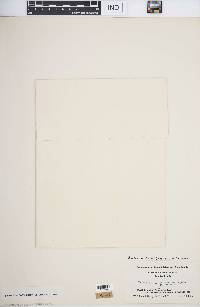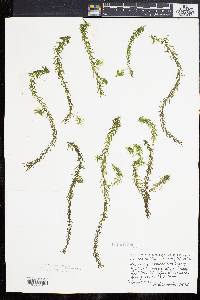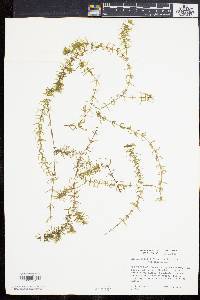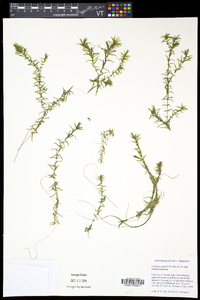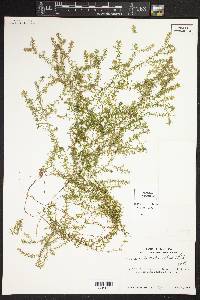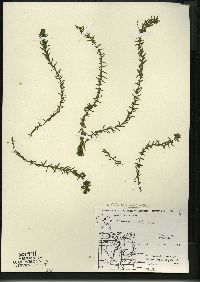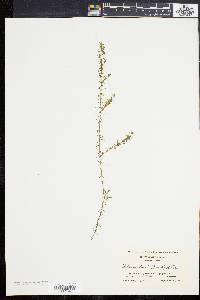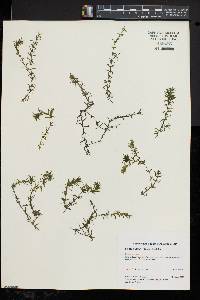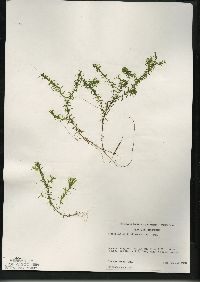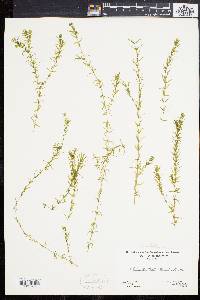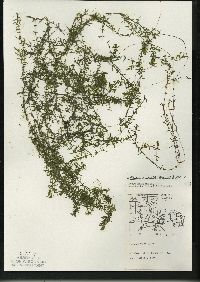
|
|
|
|
Family: Hydrocharitaceae
Nuttall's waterweed, more...Western Waterweed
[Anacharis nuttallii Planch., moreAnacharis occidentalis (Pursh) Marie- Vict., Elodea columbiana St.John, Elodea minor Farwell, Elodea nuttalli (Planch.) H. St. John, Elodea occidentalis St.John, Philotria angustifolia Britton ex Rydb., Philotria minor Small, Philotria nuttallii Rydb., Philotria occidentalis House, Udora verticillata var. minor Engelm.] |
Leaves mostly in 3s, often recurved, linear to lanceolate, 4--15.5 ´ 0.9--1.7(--2.4) mm, margins folded. Inflorescences: staminate spathes subglobose to ovoid, 2.2--4 mm; peduncles abscissing in bud; pistillate spathes linear, 8.5--15 mm. Flowers unisexual; staminate flowers: stamens 9, pedicels briefly remaining attached following anthesis; inner 3 filaments connate proximally, forming column; anthers 1--1.4 mm; pollen in tetrads; pistillate flowers: styles mostly 1.2--2 mm. Seeds fusiform, 4--4.6 mm, base with long hairs. 2n = 48 (Britain). Flowering summer. Waters, mostly calcareous, of lakes and rivers; 50--1600 m; N.B., Ont., Que.; Ark., Calif., Colo., Conn., Del., Idaho, Ill., Ind., Iowa, Kans., Ky., Maine, Md., Mass., Mich., Minn., Mont., Mo., Nebr., Nev., N.H., N.J., N.Y., N.C., N.Dak., Ohio, Okla., Oreg., Pa., R.I., S.Dak., Tenn., Vt., Va., Wash., W.Va., Wis., Wyo.; Europe; Asia. I know of no instance in North America where Elodea nuttalli or E. canadensis is weedy. Both are weedy in Europe, and E. canadensis is weedy also in Australia and New Zealand.
Perennial aquatic herb to 0.5 m long Stem: submersed, erect, rooted in substrate. Leaves: in whorls of three, stalkless, 0.3 - 1.75 mm long (usually 1.3mm), to 1.7 mm wide, linear to lance-shaped with a short pointed tip and folded margins, often recurved, limp, not densely overlapping near tip. Flowers: either male or female, found on different plants (dioecious), with three sepals and three white petals. Male flowers are surrounded by a stalkless egg-shaped and leaflike sheath (spathe) 2 - 4 mm long, and have 2 mm long sepals, absent or tiny (to 1.5 mm long) petals, and nine stamens united at the base. Flowers separate from plant and float to surface before blooming. Female flowers are surrounded by linear spathes 8.5 - 15 mm long, and have 1 - 2 mm long sepals, 1 - 2 mm long petals, three styles, and a single-chambered ovary. Fruit: a leathery, egg-shaped, few-seeded capsule that opens irregularly. The seed is 4 - 4.6 mm long and spindle-shaped with long hairs at the base. Similar species: Egeria densa has leaves in whorls of four to eight, and flowers with larger petals than Elodea nuttallii. Elodea canadensis differs by having male spathes 6 mm or longer, male flowers on long stalks when blooming, female flowers with styles longer than 2 mm, and firm leaves wider than 1.8 mm with upper leaves closely overlapping. Flowering: June to August Habitat and ecology: Most common in sandy lagoons and ditches of the southern part of the Chicago Region, but can be found in quiet streams, lakes and ditches throughout the region. This species does not tolerate degraded waters as well as Elodea canadensis. Occurence in the Chicago region: native Etymology: Elodea comes from the Greek word elodes, meaning marsh. Nuttallii is named for Thomas Nuttall, a 19th century English botanist. Author: The Morton Arboretum Habitally like no. 1 [Elodea canadensis Michx.], but the lvs narrower, paler, and softer, mostly 0.3-1.75 (avg 1.3) mm wide, not imbricate at the stem-tip; staminate spathes sessile, broadly ovoid 2-4 mm, the sessile staminate fl breaking loose and floating to the surface at anthesis, its sep 2 mm, the pet wanting or minute (to 1.5 mm); pistillate fls with sep 1-2 mm and pet 1-2(-2.5) mm; 2n=48. In quiet, usually noncalcareous water; Me. and Que. to Minn. and Nebr., s. to N.C., Miss., and Mo., and irregularly in w. U.S. July-Sept. (Anacharis n.; A. occidentalis; Philotria angustifolia; P. minor) Gleason, Henry A. & Cronquist, Arthur J. 1991. Manual of vascular plants of northeastern United States and adjacent Canada. lxxv + 910 pp. ©The New York Botanical Garden. All rights reserved. Used by permission. From Flora of Indiana (1940) by Charles C. Deam This species has the habitat of the preceding species [Elodea canadensis] but is less frequent. Most of our specimens are from the lake area. ...... Indiana Coefficient of Conservatism: C = 4 Wetland Indicator Status: OBL |
|
|
|

